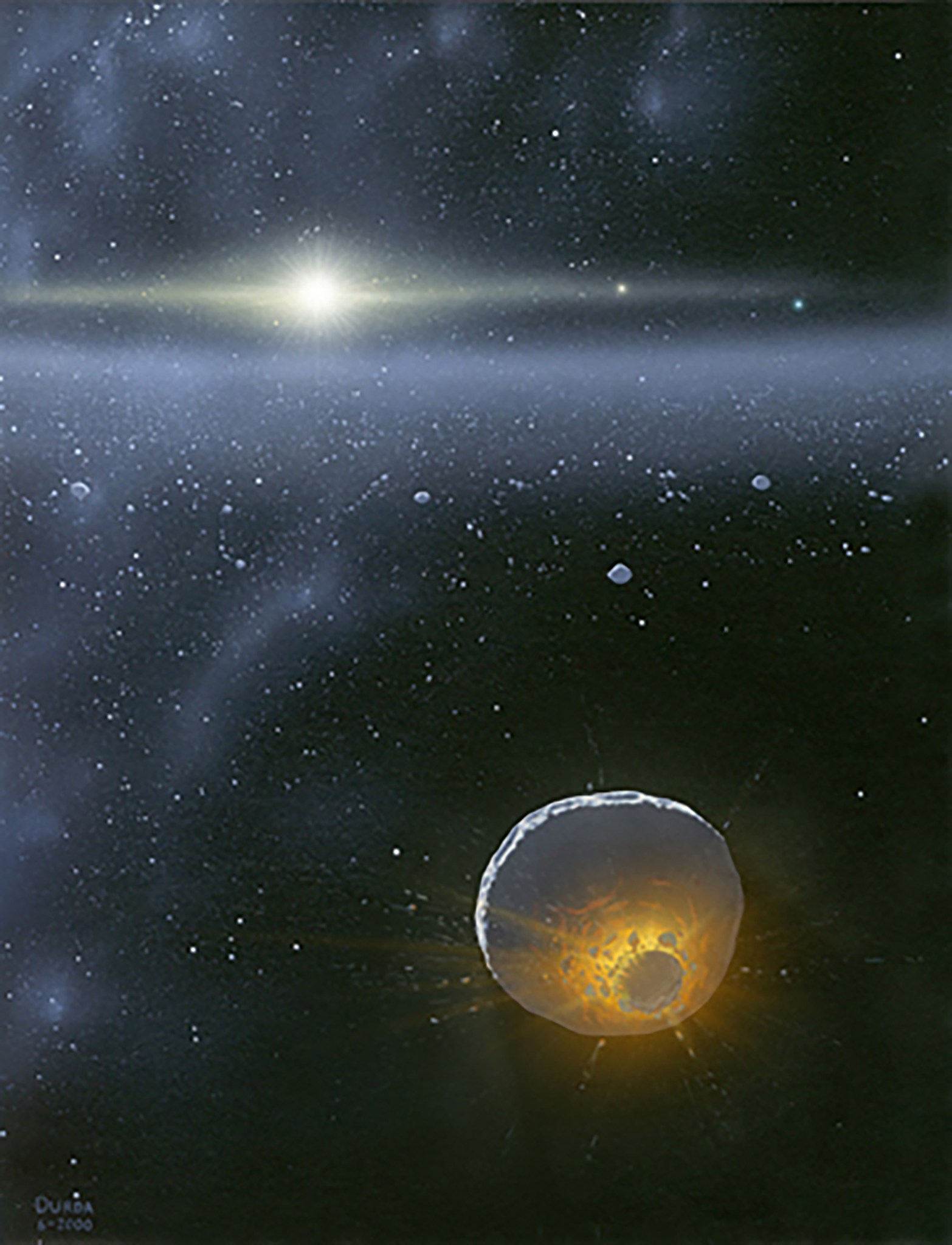4 min read
New observations from NASA's New Horizons spacecraft hint that the Kuiper Belt - the vast, distant outer zone of our solar system populated by hundreds of thousands of icy, rocky planetary building blocks - might stretch much farther out than we thought.

Speeding through the outer edges of the Kuiper Belt, almost 60 times farther from the Sun than Earth, the New Horizons Venetia Burney Student Dust Counter (SDC) instrument is detecting higher than expected levels of dust - the tiny frozen remnants of collisions between larger Kuiper Belt objects (KBOs) and particles kicked up from KBOs being peppered by microscopic dust impactors from outside of the solar system.
The readings defy scientific models that the KBO population and density of dust should start to decline a billion miles inside that distance and contribute to a growing body of evidence that suggests the outer edge of the main Kuiper Belt could extend billions of miles farther than current estimates - or that there could even be a second belt beyond the one we already know.
The results appear in the Feb. 1 issue of the Astrophysical Journal Letters.
"New Horizons is making the first direct measurements of interplanetary dust far beyond Neptune and Pluto, so every observation could lead to a discovery," said Alex Doner, lead author of the paper and a physics graduate student at the University of Colorado Boulder who serves as SDC lead. "The idea that we might have detected an extended Kuiper Belt — with a whole new population of objects colliding and producing more dust - offers another clue in solving the mysteries of the solar system's most distant regions."
Designed and built by students at the Laboratory for Atmospheric and Space Physics (LASP) at the University of Colorado Boulder under the guidance of professional engineers, SDC has detected microscopic dust grains produced by collisions among asteroids, comets and Kuiper Belt objects all along New Horizons' 5-billion-mile, 18-year journey across our solar system - which after launch in 2006 included historic flybys of Pluto in 2015 and the KBO Arrokoth in 2019. The first science instrument on a NASA planetary mission to be designed, built and "flown" by students, the SDC counts and measures the sizes of dust particles, producing information on the collision rates of such bodies in the outer solar system.
The latest, surprising results were compiled over three years as New Horizons traveled from 45 to 55 astronomical units (AU) from the Sun - with one AU being the distance between Earth and Sun, about 93 million miles or 140 million kilometers.
These readings come as New Horizons scientists, using observatories like the Japanese Subaru Telescope in Hawaii, have also discovered a number KBOs far beyond the traditional outer edge of the Kuiper Belt. This outer edge (where the density of objects starts to decline) was thought to be at about 50 AU, but new evidence suggests the belt may extend to 80 AU, or farther.
As telescope observations continue, Doner said, scientists are looking at other possible reasons for the high SDC dust readings. One possibility, perhaps less likely, is radiation pressure and other factors pushing dust created in the inner Kuiper Belt out past 50 AU. New Horizons could also have encountered shorter-lived ice particles that cannot reach the inner parts of the solar system and were not yet accounted for in the current models of the Kuiper Belt.
"These new scientific results from New Horizons may be the first time that any spacecraft has discovered a new population of bodies in our solar system," said Alan Stern, New Horizons principal investigator from the Southwest Research Institute in Boulder. "I can't wait to see how much farther out these elevated Kuiper Belt dust levels go."






